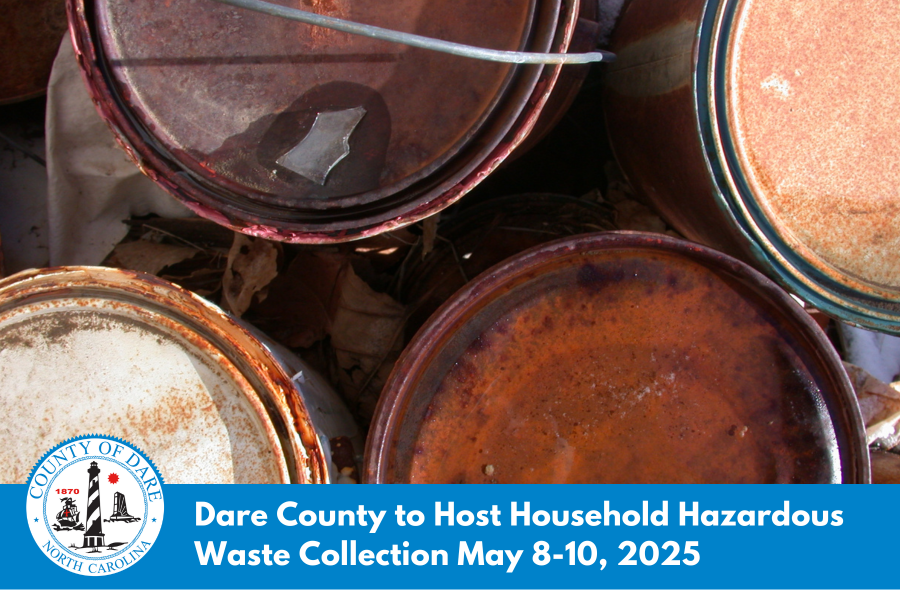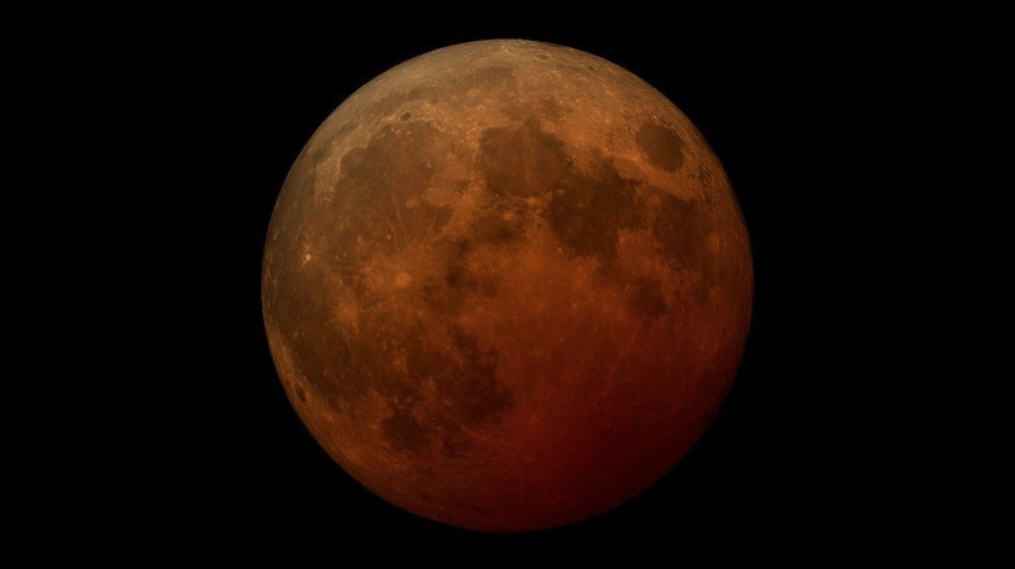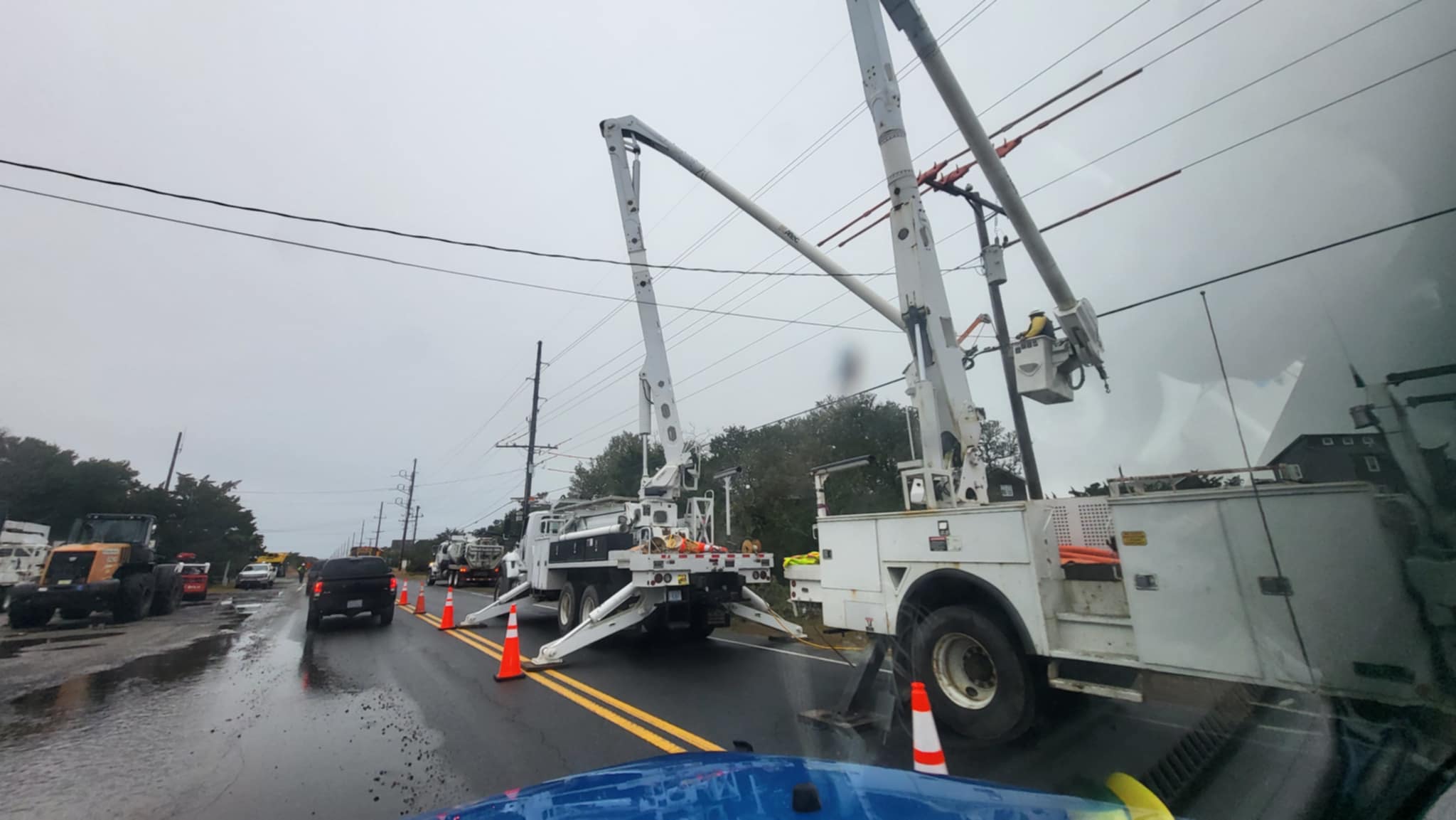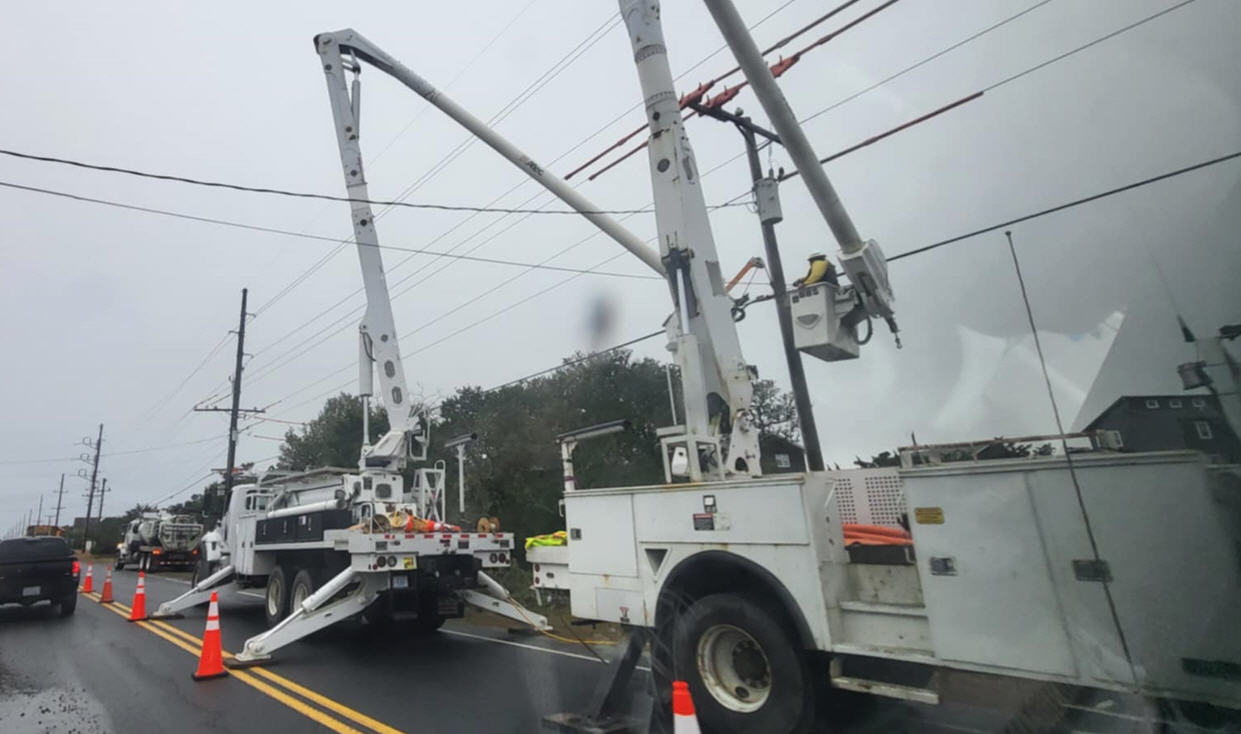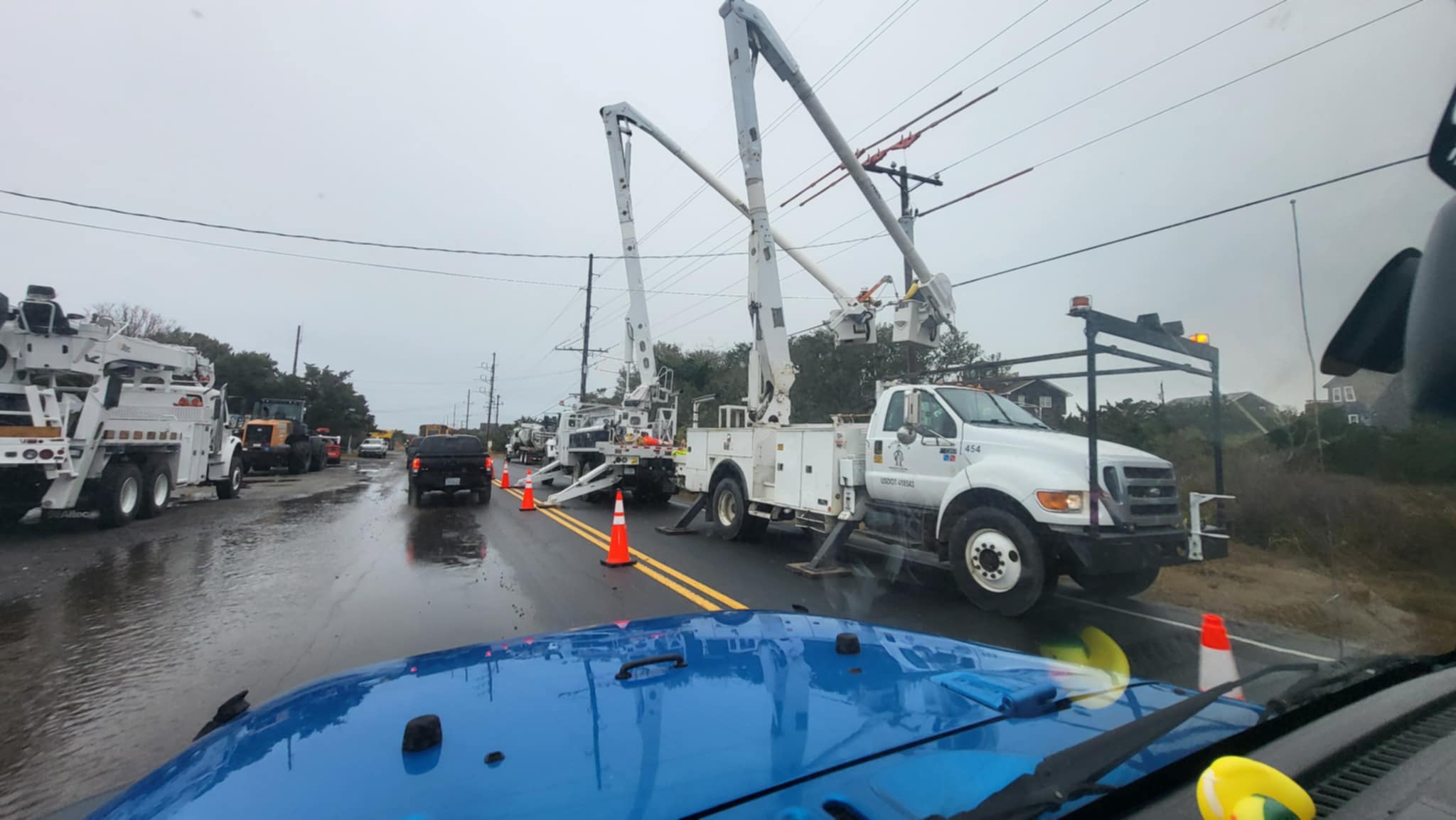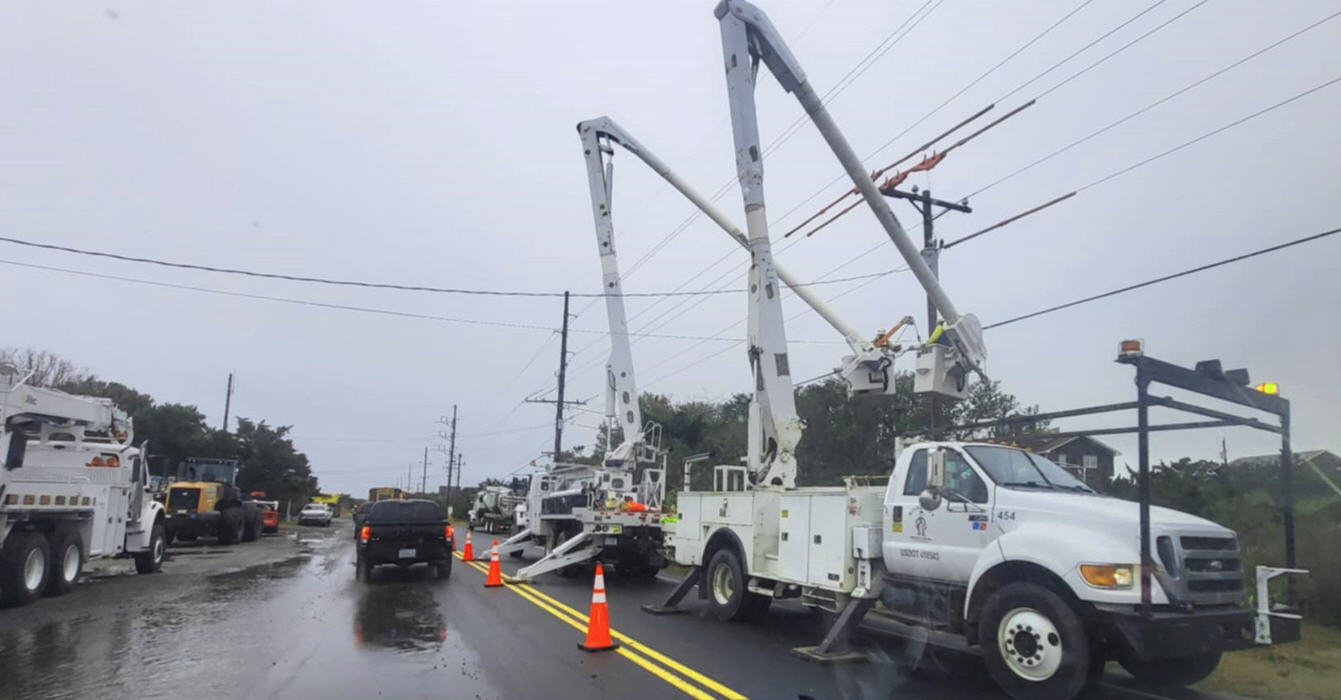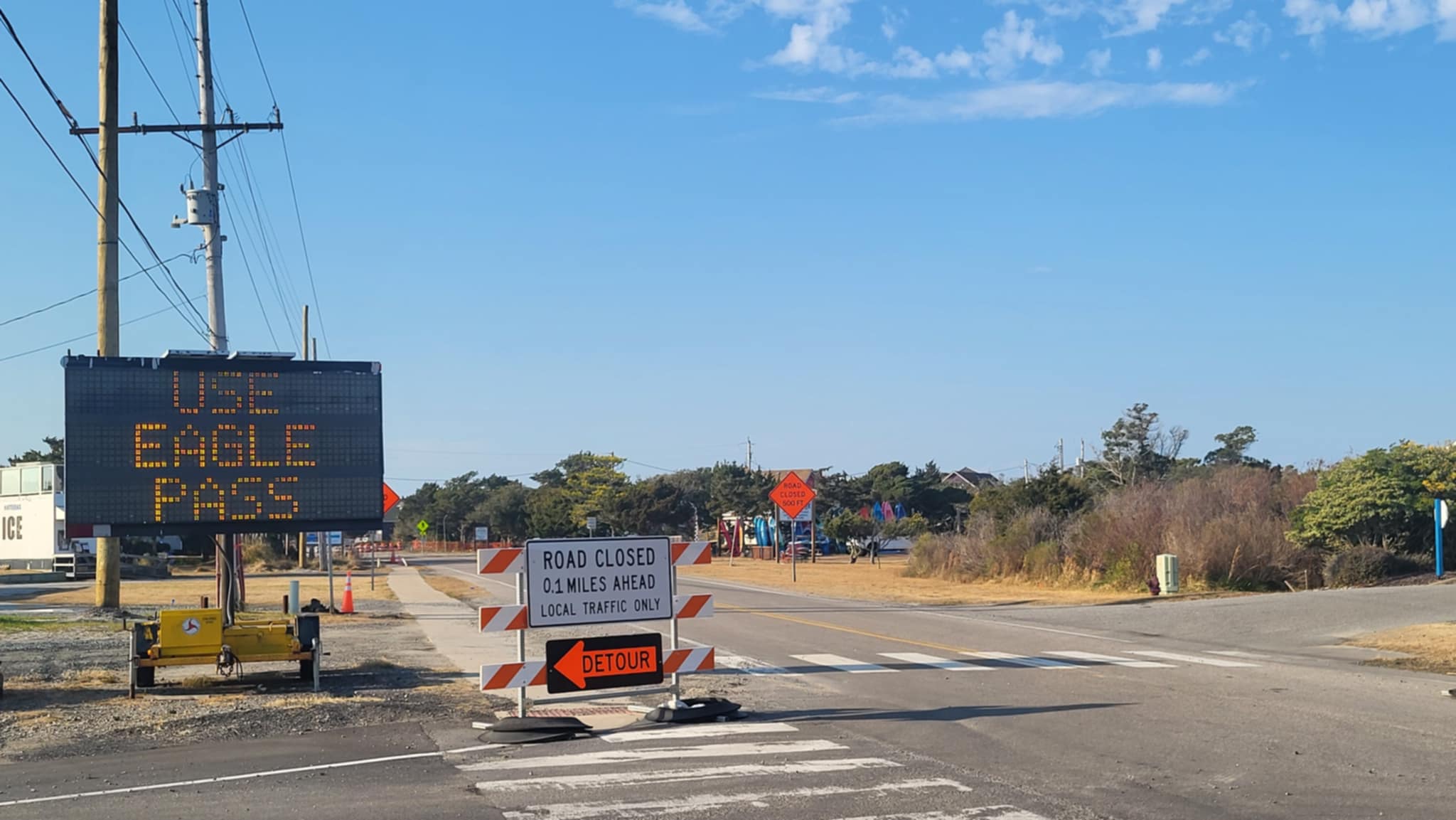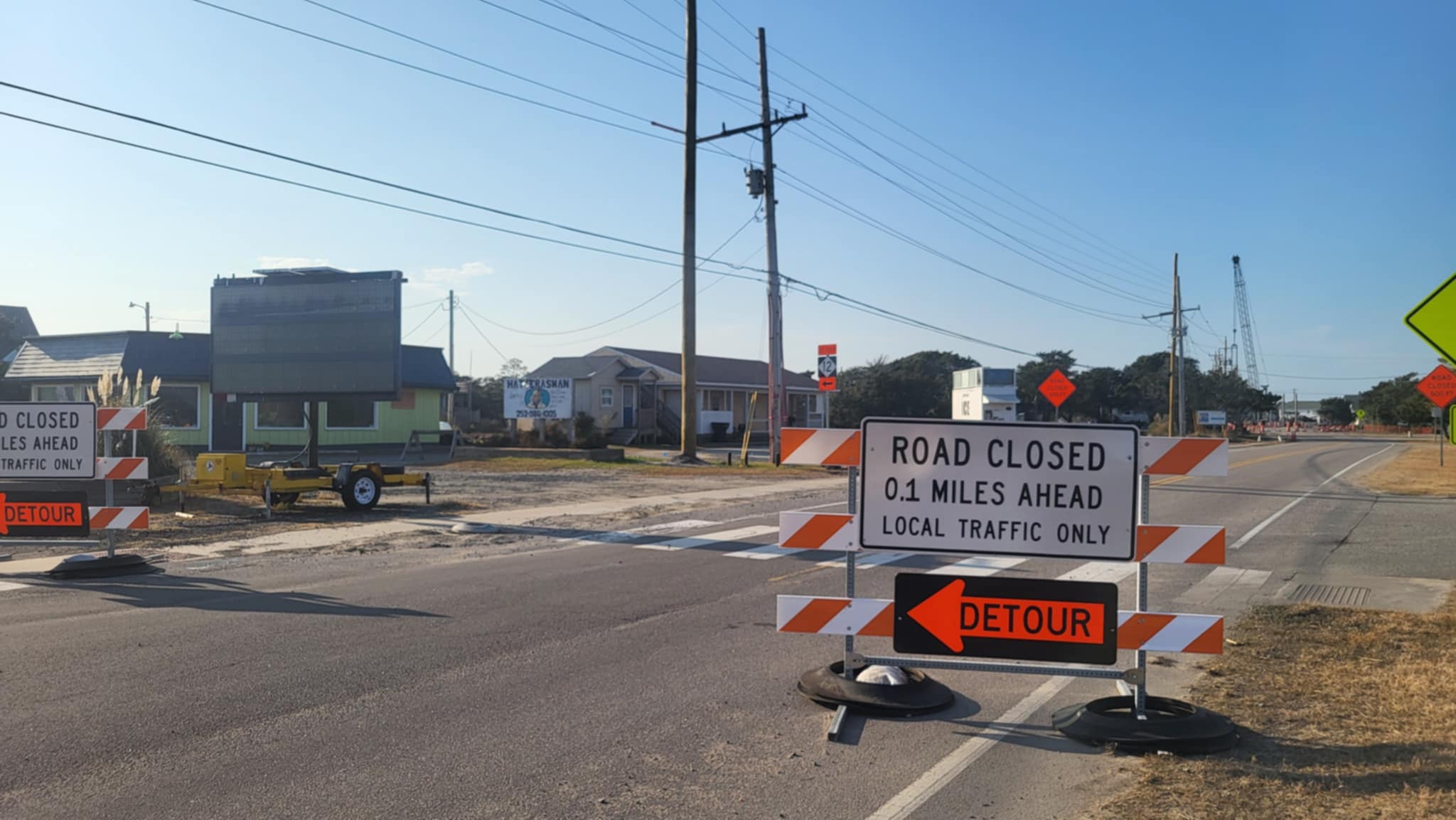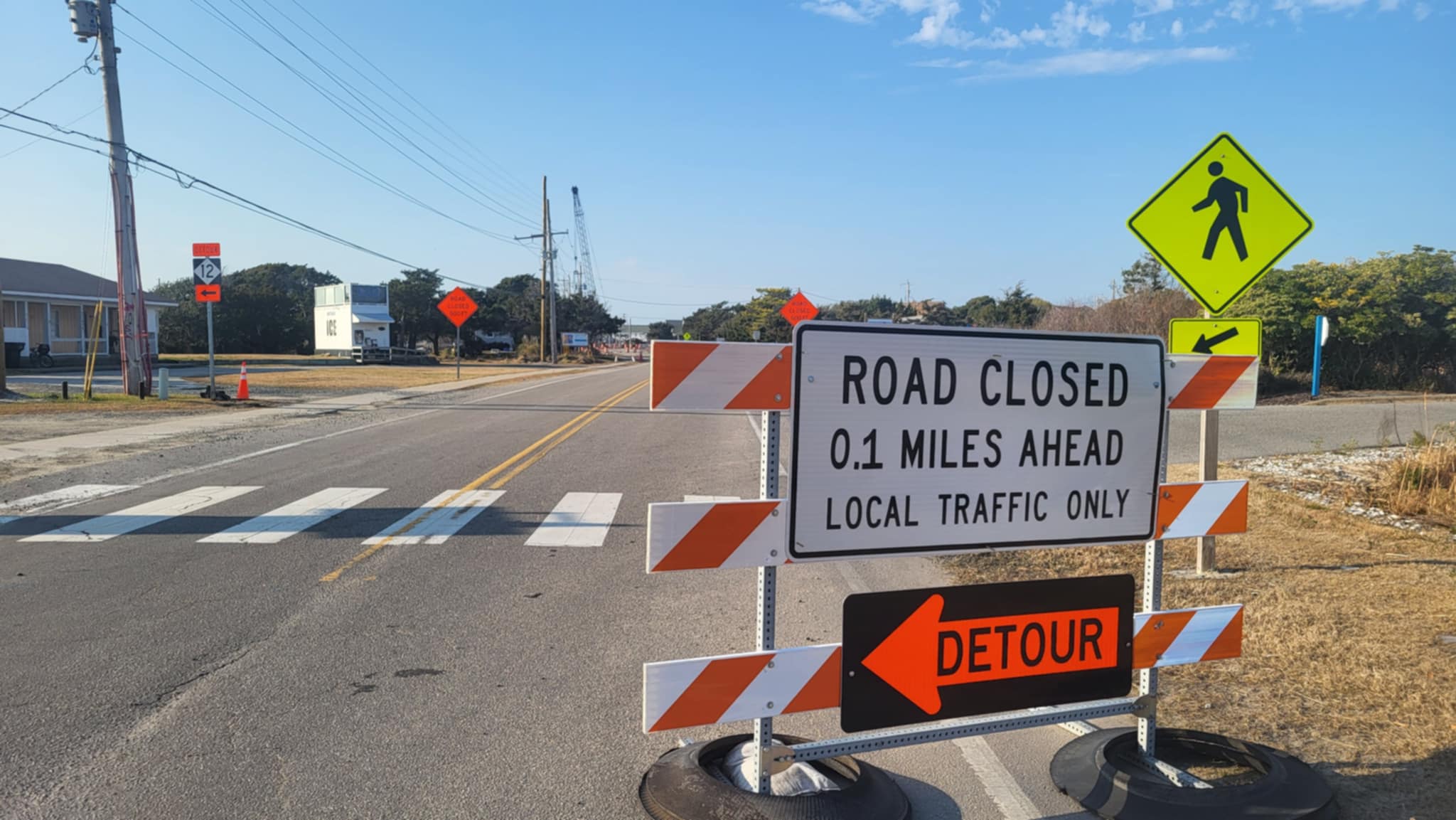Ramp 44 reopens and pedestrian access now allowed to Cape Point
Ramp 44 reopens and pedestrian access now allowed to Cape Point
By IRENE NOLAN
By IRENE NOLAN
By IRENE NOLAN
The National Park Service has reopened Ramp 44 to Cape Point. The ramp is open to all, including off-road vehicles, to the south for eight-tenths of a mile.
Also the park has restored pedestrian, but not ORV, access to Cape Point.
Cape Point has been closed to ORVs since March 18 and to pedestrians – except for those who could wade in the water – since April 21.
Ramp 44 was closed on May 15 when the first piping plover nest in the area hatched, which kicked in the 1,000-meter buffer around the chicks.
The ramp and part of the beach was re-opened and pedestrian access to Cape Point was restored because shorebird nesting activity in the area is winding down, according to Britta Muiznieks, seashore biologist.
There are still adult piping plovers and fledglings in the area, but plover breeding activity is finished in the area, she said.
This year, there were four piping plover nests in the Cape Point area. From those nests, seven chicks fledged and four were lost.
Last year, there were six nests at Cape Point, and 15 chicks from those nests fledged. Six were lost. Also, Cape Point was the only area in the seashore last year where piping plover chicks survived to fledge.
“Last year was just a really good year,” Muiznieks said. “We did everything the same this year.”
However, this year, she said, was just a “good year.”
At Bodie Island, where there have not been piping plover nests in recent years, there have been two nests. One has hatched two chicks that have not fledged and the other has not hatched.
At South Point on Ocracoke, there have been two plover nests. One chick fledged from one of the nests and the other nest has not hatched yet.
American oystercatchers nesting between Ramp 44 and Cape Point also contributed to the resource closures this year – as in past years.
Muiznieks said that park biologists think the oystercatcher nesting season has ended in the area but they aren’t sure yet because a bird version of a family drama is playing itself out north of the Point.
Three oystercatcher pairs that are banded and have nested in the area in the past returned to raise broods this year.
Two chicks from one nest fledged. One chick from a second nest has not yet fledged, but is in the hook area west of Cape Point, so is not affecting Point access.
The third pair nested, but one of the adult birds – thought to be the female – and two chicks disappeared.
The fact that they disappeared at the same time, she said, is “extremely odd.” Biologists think the chicks were lost to predation, but have found no remains of the adult bird.
Now, another oystercatcher, which is not banded, has moved into the area and the remaining adult and the newcomer have been engaged in breeding activity – making scrapes for a nest.
“It’s unlikely they would nest at this point,” Muiznieks said. She added that the latest nest documented at the seashore in recent years was established on July 10.
However, biologists are keeping an eye on the new couple.
There is a buffer around the scrape area, but Muiznieks said that biologists thought that a pedestrian corridor along the shoreline to Cape Point was appropriate.
Folks walking to Cape Point should not stray out of the pedestrian corridor.
The National Park Service has reopened Ramp 44 to Cape Point. The ramp is open to all, including off-road vehicles, to the south for eight-tenths of a mile.
Also the park has restored pedestrian, but not ORV, access to Cape Point.
Cape Point has been closed to ORVs since March 18 and to pedestrians – except for those who could wade in the water – since April 21.
Ramp 44 was closed on May 15 when the first piping plover nest in the area hatched, which kicked in the 1,000-meter buffer around the chicks.
The ramp and part of the beach was re-opened and pedestrian access to Cape Point was restored because shorebird nesting activity in the area is winding down, according to Britta Muiznieks, seashore biologist.
There are still adult piping plovers and fledglings in the area, but plover breeding activity is finished in the area, she said.
This year, there were four piping plover nests in the Cape Point area. From those nests, seven chicks fledged and four were lost.
Last year, there were six nests at Cape Point, and 15 chicks from those nests fledged. Six were lost. Also, Cape Point was the only area in the seashore last year where piping plover chicks survived to fledge.
“Last year was just a really good year,” Muiznieks said. “We did everything the same this year.”
However, this year, she said, was just a “good year.”
At Bodie Island, where there have not been piping plover nests in recent years, there have been two nests. One has hatched two chicks that have not fledged and the other has not hatched.
At South Point on Ocracoke, there have been two plover nests. One chick fledged from one of the nests and the other nest has not hatched yet.
American oystercatchers nesting between Ramp 44 and Cape Point also contributed to the resource closures this year – as in past years.
Muiznieks said that park biologists think the oystercatcher nesting season has ended in the area but they aren’t sure yet because a bird version of a family drama is playing itself out north of the Point.
Three oystercatcher pairs that are banded and have nested in the area in the past returned to raise broods this year.
Two chicks from one nest fledged. One chick from a second nest has not yet fledged, but is in the hook area west of Cape Point, so is not affecting Point access.
The third pair nested, but one of the adult birds – thought to be the female – and two chicks disappeared.
The fact that they disappeared at the same time, she said, is “extremely odd.” Biologists think the chicks were lost to predation, but have found no remains of the adult bird.
Now, another oystercatcher, which is not banded, has moved into the area and the remaining adult and the newcomer have been engaged in breeding activity – making scrapes for a nest.
“It’s unlikely they would nest at this point,” Muiznieks said. She added that the latest nest documented at the seashore in recent years was established on July 10.
However, biologists are keeping an eye on the new couple.
There is a buffer around the scrape area, but Muiznieks said that biologists thought that a pedestrian corridor along the shoreline to Cape Point was appropriate.
Folks walking to Cape Point should not stray out of the pedestrian corridor.
The National Park Service has reopened Ramp 44 to Cape Point. The ramp is open to all, including off-road vehicles, to the south for eight-tenths of a mile.
Also the park has restored pedestrian, but not ORV, access to Cape Point.
Cape Point has been closed to ORVs since March 18 and to pedestrians – except for those who could wade in the water – since April 21.
Ramp 44 was closed on May 15 when the first piping plover nest in the area hatched, which kicked in the 1,000-meter buffer around the chicks.
The ramp and part of the beach was re-opened and pedestrian access to Cape Point was restored because shorebird nesting activity in the area is winding down, according to Britta Muiznieks, seashore biologist.
There are still adult piping plovers and fledglings in the area, but plover breeding activity is finished in the area, she said.
This year, there were four piping plover nests in the Cape Point area. From those nests, seven chicks fledged and four were lost.
Last year, there were six nests at Cape Point, and 15 chicks from those nests fledged. Six were lost. Also, Cape Point was the only area in the seashore last year where piping plover chicks survived to fledge.
“Last year was just a really good year,” Muiznieks said. “We did everything the same this year.”
However, this year, she said, was just a “good year.”
At Bodie Island, where there have not been piping plover nests in recent years, there have been two nests. One has hatched two chicks that have not fledged and the other has not hatched.
At South Point on Ocracoke, there have been two plover nests. One chick fledged from one of the nests and the other nest has not hatched yet.
American oystercatchers nesting between Ramp 44 and Cape Point also contributed to the resource closures this year – as in past years.
Muiznieks said that park biologists think the oystercatcher nesting season has ended in the area but they aren’t sure yet because a bird version of a family drama is playing itself out north of the Point.
Three oystercatcher pairs that are banded and have nested in the area in the past returned to raise broods this year.
Two chicks from one nest fledged. One chick from a second nest has not yet fledged, but is in the hook area west of Cape Point, so is not affecting Point access.
The third pair nested, but one of the adult birds – thought to be the female – and two chicks disappeared.
The fact that they disappeared at the same time, she said, is “extremely odd.” Biologists think the chicks were lost to predation, but have found no remains of the adult bird.
Now, another oystercatcher, which is not banded, has moved into the area and the remaining adult and the newcomer have been engaged in breeding activity – making scrapes for a nest.
“It’s unlikely they would nest at this point,” Muiznieks said. She added that the latest nest documented at the seashore in recent years was established on July 10.
However, biologists are keeping an eye on the new couple.
There is a buffer around the scrape area, but Muiznieks said that biologists thought that a pedestrian corridor along the shoreline to Cape Point was appropriate.
Folks walking to Cape Point should not stray out of the pedestrian corridor.
The National Park Service has reopened Ramp 44 to Cape Point. The ramp is open to all, including off-road vehicles, to the south for eight-tenths of a mile.
Also the park has restored pedestrian, but not ORV, access to Cape Point.
Cape Point has been closed to ORVs since March 18 and to pedestrians – except for those who could wade in the water – since April 21.
Ramp 44 was closed on May 15 when the first piping plover nest in the area hatched, which kicked in the 1,000-meter buffer around the chicks.
The ramp and part of the beach was re-opened and pedestrian access to Cape Point was restored because shorebird nesting activity in the area is winding down, according to Britta Muiznieks, seashore biologist.
There are still adult piping plovers and fledglings in the area, but plover breeding activity is finished in the area, she said.
This year, there were four piping plover nests in the Cape Point area. From those nests, seven chicks fledged and four were lost.
Last year, there were six nests at Cape Point, and 15 chicks from those nests fledged. Six were lost. Also, Cape Point was the only area in the seashore last year where piping plover chicks survived to fledge.
“Last year was just a really good year,” Muiznieks said. “We did everything the same this year.”
However, this year, she said, was just a “good year.”
At Bodie Island, where there have not been piping plover nests in recent years, there have been two nests. One has hatched two chicks that have not fledged and the other has not hatched.
At South Point on Ocracoke, there have been two plover nests. One chick fledged from one of the nests and the other nest has not hatched yet.
American oystercatchers nesting between Ramp 44 and Cape Point also contributed to the resource closures this year – as in past years.
Muiznieks said that park biologists think the oystercatcher nesting season has ended in the area but they aren’t sure yet because a bird version of a family drama is playing itself out north of the Point.
Three oystercatcher pairs that are banded and have nested in the area in the past returned to raise broods this year.
Two chicks from one nest fledged. One chick from a second nest has not yet fledged, but is in the hook area west of Cape Point, so is not affecting Point access.
The third pair nested, but one of the adult birds – thought to be the female – and two chicks disappeared.
The fact that they disappeared at the same time, she said, is “extremely odd.” Biologists think the chicks were lost to predation, but have found no remains of the adult bird.
Now, another oystercatcher, which is not banded, has moved into the area and the remaining adult and the newcomer have been engaged in breeding activity – making scrapes for a nest.
“It’s unlikely they would nest at this point,” Muiznieks said. She added that the latest nest documented at the seashore in recent years was established on July 10.
However, biologists are keeping an eye on the new couple.
There is a buffer around the scrape area, but Muiznieks said that biologists thought that a pedestrian corridor along the shoreline to Cape Point was appropriate.
Folks walking to Cape Point should not stray out of the pedestrian corridor.
Subject
Name
(required, will not be published)
(required, will not be published)
City :
State :
Your Comments:
May be posted on the Letters to the Editor page at the discretion of the editor.
May be posted on the Letters to the Editor page at the discretion of the editor.
May be posted on the Letters to the Editor page at the discretion of the editor.
May be posted on the Letters to the Editor page at the discretion of the editor.












